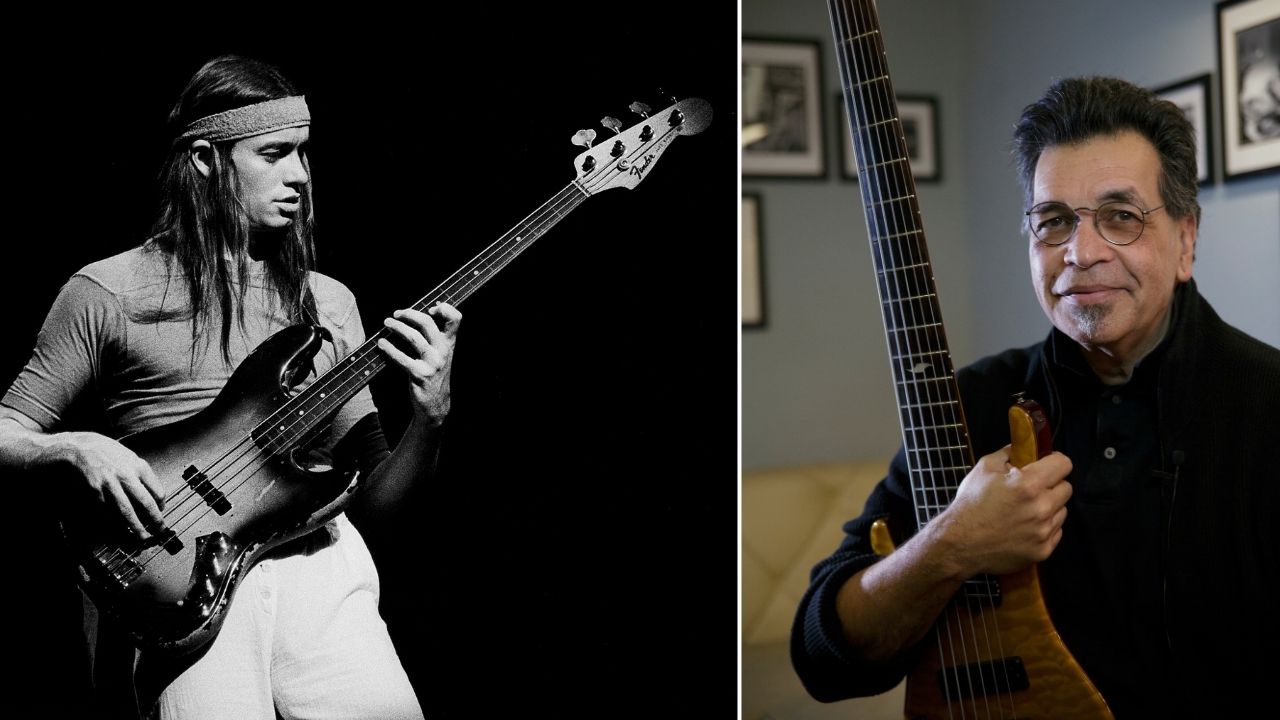“My solos are more like rolling scales than the call-and-response of blues riffs... I used to analyze the progression. If I didn’t like what was available, I’d play as weird as possible”: How Randy Rhoads reinvented classical guitar for metal
Applying classical training to the service of heavy metal, Rhoads was the generational guitar talent that helped launch Ozzy Osbourne's solo career

Born in Santa Monica California in 1956, Randy Rhoads was tragically killed in a plane crash in 1982 at the age of 25. Despite his young years, Randy had recorded four studio albums.
He appeared on the first two Quiet Riot albums and two Ozzy Osbourne albums; Blizzard Of Ozz which was Ozzy’s 1980 debut solo release, and the follow-up, Diary Of A Madman released in 1981.
Randy’s mother Delores was a professional pianist and ran a music school at which he was a student of classical guitar from a young age. This musical sensibility and theoretical knowledge undoubtedly permeated his heavy metal playing. This, along with his fiery technique, meant that his contributions continue to be an inspiration to guitarists.
"Leslie West was one of my favorites because he used classical ideas with feeling,” Rhoads told Guitar World in May, 1982. “He was melodic but mean. My solos are more like rolling scales than the call-and-response of blues riffs.
“Quiet Riot played songs with a lot of changes. I used to analyze the progression and look over my possibilities. If I didn’t like what was available, I’d play as weird as possible.”
In this lesson we’ll look at some of the approaches Randy used during his time with Ozzy, from alternate picking to legato and tapping styles, performed at a level of proficiency rarely seen or heard in the early 80s and even more impressive considering the limitations in the equipment of the time.
Randy possessed fantastic alternate picking and Example 1 is a Rhoads-style picked lick based in the F# Blues scale. Make the string changes easier by using just the tip of the pick to glide across the strings, rather than digging in too much as this will result in getting caught between the strings.
Our second example uses pull-offs for a classical style lick, which was later utilised by players like Yngwie Malmsteen and Randy’s Ozzy successor Zakk Wylde.
All the latest guitar news, interviews, lessons, reviews, deals and more, direct to your inbox!
The lick uses a mixture of Major, Minor and Diminished triads that exist within the key of A Minor. The root notes are placed on the second string with second finger, while the 3rd and 5th intervals are played on the first string using first and fourth fingers.
Example 3 is a trilling lick mainly using semitone intervals to hammer-on and pull-off in the context of an A Major triad. Either use your first and second fingers, or you can use different pairs of fingers and maintain your hand in the same position.
Our fourth example ascends the neck using legato through the A Minor scale while position shifting on each pair of strings to create a diagonal path across the the neck from a low A root to a high one. The lick finishes with fast tremolo picking which is best performed with a relaxed, rotating wrist motion similar to turning a key.
Last comes a tapping lick in E Minor. For each group of six notes, tap the top melody on the 19th, 20th and 17th frets twice each. Play each example slowly at first. Focus on accuracy, counting, timing and economy of motion. Gradually increase the tempo until you can comfortably play each section up to speed with the backing tracks.
Get the tone
Amp Settings: Gain 7, Middle 5, Treble 6, Reverb 1
Randy’s tone was provided by a Marshall 1959 100 -watt head with an MXR Distortion Plus pedal, which added gain and tightened the low end. Randy used a Seymour Duncan humbucker pickup in his Jackson guitars. Randy designed his own offset V shape, which is still known as the Randy Rhoads. Aim for a classic heavy metal tone without too much gain saturation.
Example 1.
This lick is based in F# Blues scale (F#-A-B-C-C#-E) and uses a descending sequence of three to descend from the first string to the sixth. Focus on the first six notes and practise using strict alternate picking.
Once you can comfortably play these two strings, the same technique can be applied to the other pairs of strings.
Example 2.
This lick uses triad arpeggios within the key of A Minor (A-B-C-D-E-F-G). The ascending arpeggios are: Am-Bdim-C-Dm-Em with the root note on the second string. The lick is played with repeating three-note phrasing throughout. Play each triplet with a downstroke on the first string, followed by a pull-off then an upstroke.
Example 3.
You can think of this lick as A Phrygian Dominant (A-Bb-C#-D-E-F-G) scale, or as an A Major triad (A-C#-E) with a semitone trill added above each note. Pick each downbeat with a downstroke then hammer-on and pull-off twice for each beat while maintaining constant 16th-note phrasing.
Example 4.
Use legato to ascend through positions of A Aeolian mode (A-B-C-D-E-F-G) starting with the root on the 5th fret and ending on a high root on the 17th fret. Finish the lick with fast tremolo picking on the first string and a final tone bend at the 22nd fret.
Example 5.
This tapping lick is based in E Aeolian mode (E-F#-G-A-B-C-D). It is played in a repeating six-note phrase, with two tapped notes followed by a fretting-hand pull-off and hammer-on. The descending string transitions are played with fretting-hand taps, shown as squared notes and fret numbers.

Charlie Griffiths plays guitar in acclaimed prog-metal outfit Haken, and has a wealth of experience handling corporate and session gigs for genres as diverse as rock, heavy metal and pop. He has been a regular contributor to Total Guitar, Guitar Techniques and Guitar World for over fifteen years. His latest release is Tiktaalika - Gods of Pangaea which features stunning playing on, this time, 6-string guitars.

